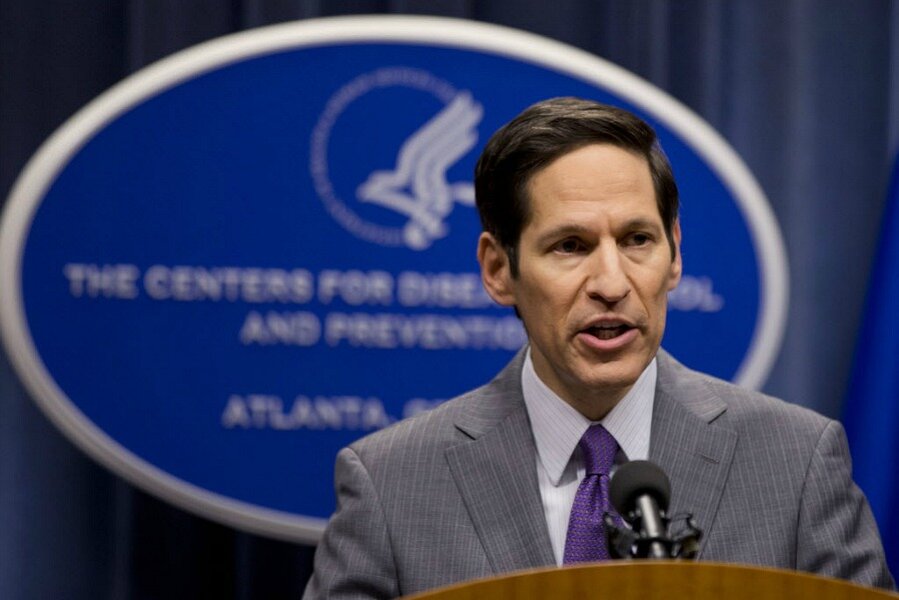CDC commitment to safety 'inconsistent and insufficient,' report finds
Loading...
The Centers for Disease Control and Prevention, the federal agency dealing with Ebola, anthrax, measles, avian flu, and other issues involving public health, has come under fire for what a panel of experts says are inadequate lab safety practices and procedures.
The independent panel was named last year after a series of safety lapses at CDC facilities, including the accidental exposure of 80 unprotected workers to pathogenic anthrax at CDC's Bioterrorism Rapid Response and Advanced Technology lab in June.
"Leadership commitment toward safety has been inconsistent and insufficient at multiple levels," the report states. "Safety, including lab safety, is viewed by many as something separate from and outside the primary missions of public health and research. Safety is not integrated into strategic planning and is not currently part of the CDC culture, enterprise-wide.”
“Individual divisions, teams and lab groups have taken it upon themselves to implement safety programs, but this is not done in a consistent manner, nor is it done across the CDC,” the report charges. “A clearly articulated CDC safety mission, vision or direction is lacking.”
The report is dated Jan. 13, but the CDC only just released the findings this week.
In response to the report, the agency said on its website: “CDC concurs with these recommendations, has made progress towards implementing them, and will soon report on that progress. CDC's aim is to improve the culture of laboratory safety across the agency and minimize the risks associated with laboratory work.”
CDC Director Tom Frieden, a medical doctor, convened the panel last year after several incidents involving failures in safety procedures. In December, specimens of the Ebola virus were mixed up and a lab worker was potentially exposed. In another incident, a biological specimen that had been cross-contaminated with a more pernicious strain of bird flu was sent to a US Department of Agriculture facility.
In congressional testimony last July, Rutgers University's Richard Ebright, a professor of chemistry and chemical biology, noted reports of “biosafety and biosecurity engineering flaws and equipment failures at CDC select-agent laboratories, including inadequate provisions for emergency backup power (essential to maintain safety and security containment in the event of a power outage), failure to maintain negative-pressure airflow in biocontainment areas (essential to ensure safety and security containment at all times), non-functioning doors between biocontainment areas and corridors, non-functioning door seals between biocontainment areas and corridors, and jury-rigged repairs to door seals with duct tape.”
The “laboratory safety workgroup” convened by Dr. Frieden included experts in biosafety, laboratory science, and research. The group reviewed CDC incident reports and safety policies, visited CDC labs, conducted a lab safety culture survey, and met with internal staff and leadership. The 11-member panel was co-chaired by Joseph Kanabrocki, associate vice president for research safety at the University of Chicago, and University of Florida emeritus professor Kenneth Berns.
“Interviews and surveys demonstrated that many employees neither understand the agency’s response to accidents nor how that information is communicated to the larger agency community outside immediately affected labs,” the group reported. “Disturbingly, the negative responses peak among those individuals who work at BSL3 and 4, especially among those holding a master’s degree.”
Biosafety Level 3 and Biosafety Level 4 labs (BSL3 and 4) deal with the most dangerous bacteria, viruses, and toxins.
The report makes many recommendations. These include:
- Establishing a standardized lab safety training curriculum, as well as standardized methods for competency skills mapping and refresher training.
- Establishing an external review and accreditation process for all CDC labs.
- Hiring a director to oversee lab safety.
- Rewarding researchers who run safe labs.
- Documenting the risks and benefits of proposed experimental work before the work is begun
“Efforts to establish a culture of responsible science and accountability are of critical importance,” the report emphasizes. “This culture of responsible science will require prompt and accurate reporting of incidents or breaches in standard protocol without fear of reprimand or punishment.”
Responding to the report and its recommendations, CDC Chief Operating Officer Sherri Berger said in a statement, “It's critical that we continue to solicit feedback on how we can improve our operations, especially functions as critical as lab safety. We brought this group of external experts together over the summer to assist us with identifying and implementing solutions, of which many are already underway.”








